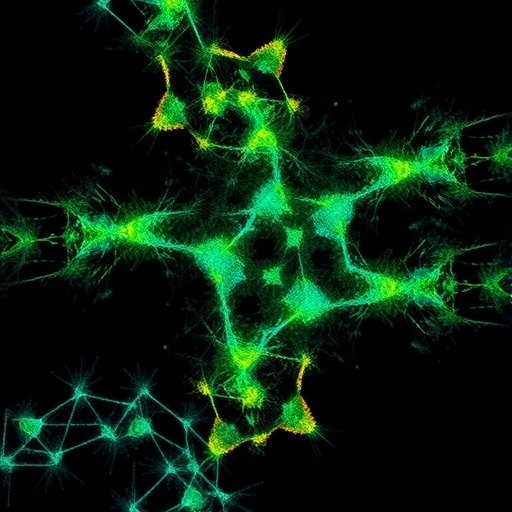In the realm of machine learning, the exploration of complex, high-dimensional data has led researchers to develop techniques that can unveil the underlying structure of such data. Among these techniques, manifold learning stands out as a powerful tool for revealing intrinsic low-dimensional structures hidden within high-dimensional spaces. However, despite the progress made in this field, existing manifold learning technologies have encountered significant limitations. One of the most pressing issues is the extensive distortions often observed in the cluster structures. Such distortions can obscure the true nature of the data, complicating efforts to understand the underlying patterns.
Recent advancements have prompted researchers to address these challenges, leading to the emergence of a novel approach known as Sampling-enabled Scalable Manifold Learning, or SUDE. This innovative technique aims to provide a solution to the pressing problem of scalability while maintaining fidelity in the preservation of data structures. The traditional methods frequently struggle with large-scale datasets, given that they are not optimized for efficiently processing high-dimensional data. SUDE steps in to bridge this gap, offering new avenues for exploration in both research and practical applications.
The foundation of SUDE lies in its pioneering sampling-based strategy. Rather than attempting to map the entirety of a high-dimensional dataset in one go, the technique begins by identifying a set of landmark points that serve as a base for constructing the low-dimensional skeleton of the entire dataset. This initial step is crucial; the selection of effective landmarks allows for a more coherent and structured embedding, helping to maintain the integrity of the relationships between data points.
Once the landmarks are established, SUDE integrates the remaining non-landmark points into the learned space through a method known as constrained locally linear embedding. This approach ensures that the original relationships and configurations among data points are respected and retained during the embedding process. What sets this method apart is its capacity to deliver a uniform and discriminative embedding even when dealing with massive datasets and increased dimensionality.
Empirical validation has demonstrated the efficacy of SUDE across various datasets, both synthetic and real-world. In particular, this technique has shown remarkable success in analyzing intricate single-cell data, allowing researchers to derive meaningful insights from complex biological systems. Through its ability to effectively manage high-dimensional data, SUDE proves to be a vital resource for bioinformatics and life sciences, shedding light on cellular behaviors and interactions that were previously difficult to decode.
Moreover, SUDE has been effectively employed in the realm of medical diagnostics, specifically in the detection of anomalies within electrocardiogram (ECG) signals. The technique’s advantages in scalability are particularly beneficial in medical applications, where large datasets are commonly generated. In such cases, ensuring that the high-dimensional heart signal data is accurately represented can lead to improved detection of irregular patterns, potentially enhancing patient diagnosis and treatment.
One of the standout features of SUDE is its robustness, which has been apparent even as sampling rates decrease. This characteristic adds to the method’s appeal, as it suggests that SUDE does not require exhaustive data quantities to achieve high-quality embeddings. Instead, the technique can deliver commendable results with fewer data points, thus making it a cost-effective and time-saving option for researchers and practitioners alike.
By providing uniform and discriminative embeddings, SUDE significantly advances the field of manifold learning. This has substantial implications for various industries, from healthcare to finance, as the method empowers users to discover hidden relationships in their data more efficiently. Furthermore, the clarity it offers regarding cluster separations enhances the potential for accurate classifications and insightful analyses, paving the way for novel discoveries.
To validate its performance further, researchers have undertaken comparative studies between SUDE and existing manifold learning techniques. The results have consistently shown that SUDE maintains superior cluster integrity, thus ensuring that the natural groupings within the data remain intact. Additionally, the global structure preservation aspect underscores SUDE’s capability to maintain the overarching patterns that characterize high-dimensional data, making it invaluable for analyses that demand both local and global perspectives.
The demand for scalable solutions in data science has never been higher, as organizations strive to keep pace with the growing volumes of data they contend with daily. SUDE presents a forward-thinking answer to this issue, allowing scholars, scientists, and businesses to navigate high-dimensional landscapes without sacrificing the quality of their analyses. It exemplifies the progress being made in the machine learning domain as researchers continue to refine and develop techniques that resonate with real-world challenges.
To summarize, SUDE is not just a theoretical construct but a practical and scalable approach to manifold learning that underscored recent advancements in the analysis of complex data. Its success in various applications, such as single-cell analysis and the detection of ECG anomalies, positions it as a transformative tool in multiple fields. This innovative strategy not only addresses the gaps found in previous methodologies but also opens up new pathways for research and application, ultimately leading to more profound insights and a better understanding of complex data structures.
As SUDE continues to gain traction within the scientific community, its promise in enhancing the interpretation of high-dimensional data holds exciting prospects for future explorations. As we forge ahead into an era dominated by data, the development and implementation of techniques like SUDE will undoubtedly become increasingly vital. Ultimately, the journey of decoding complex data structures has only just begun, and with initiatives like SUDE, the future looks exceedingly bright.
Subject of Research: Sampling-enabled scalable manifold learning for high-dimensional data.
Article Title: Sampling-enabled scalable manifold learning unveils the discriminative cluster structure of high-dimensional data.
Article References:
Peng, D., Gui, Z., Wei, W. et al. Sampling-enabled scalable manifold learning unveils the discriminative cluster structure of high-dimensional data.
Nat Mach Intell (2025). https://doi.org/10.1038/s42256-025-01112-9
Image Credits: AI Generated
DOI:
Keywords: Manifold Learning, High-dimensional Data, Sampling-based Techniques, Machine Learning, Cluster Structure, Scalability, Single-cell Analysis, ECG Detection, Data Integrity, Local Linear Embedding.




